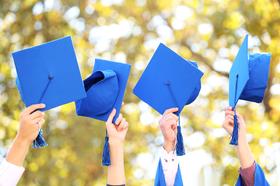The latest report from the American Association of Community Colleges “tells it like it is,” calling the American Dream imperiled and asking two-year colleges nationwide to raise the bar on higher education standards. While the new report does offer some positive feedback on the current condition of community colleges in terms of growth and success, it also provides feedback on where schools are lacking and what can be done to bring these institutions to a place where they can serve students and the business community most effectively. There are seven problems and seven solutions, providing a blueprint colleges can use to improve the quality of education and professional training.
Shifting the Focus
The Chronicle of Higher Education explains that this report, titled “Reclaiming the American Dream: Community Colleges and the Nation’s Future,” is the culmination of several months of research by a 38-member community. Those involved in the report include college presidents, education-policy experts, and leaders of non-profit groups.
“This is a brutally honest report,” Walter Bumphus, president of the American Association of Community Colleges, told the Chronicle. “For years we have been focused on access, and now we need to turn our attention equally to student access. It takes courage to say we can do better.”
The report offers a new perspective on the condition of community colleges beyond their commitment to an open-admission policy and providing access to students who are typically underserved. Once the students are enrolled, their success becomes the focus. That is precisely where community colleges can stand to see plenty of improvement.
“Some people within and outside the field will look at this and say, ‘wow’ and ‘ouch,’” Kay M. McClenney, co-chair of the commission and director for the Center for Community College Student Engagement at the University of Texas at Austin, told the Chronicle. “But it’s really hard to get better at things if you are not willing to look at the problems.”
1. Low Completion Rates
The first concern voiced in the report is that of low completion rates among community college students. U.S. News and World Report states that, according to the report, less than half of all students who enroll in a community college graduate or transfer to a four-year institution within six years. The report recommends that schools improve completion rates by 50 percent by 2020. At the same time, community colleges must preserve access, enhance quality, and ensure all students have access to higher education.
2. Students Not Prepared for College
The report also deals with the many students who enter college unprepared for the rigors of higher education. A press release at Market Watch cites the recommendation by the committee to improve college readiness in 2020. This would involve reducing the number of students unprepared for college work by half by increasing the number of students who take developmental courses before taking freshman-level courses. Developmental courses should also be accelerated to prevent them from hindering completion rates.
3. Wide Skills Gap
The report also recommends that community colleges do a better job of preparing students for the workforce by focusing on career and technical education. Bumphus agrees with the recommendation. He told U.S. News and World Report that while community colleges have made great strides in this area, they are still far away from the “community career centers” President Obama envisions.
“We need to do a better job of moving the bar and graduating more students,” Bumphus said.
4. Undefined Mission
To ensure community colleges become more efficient in educating the students they serve, the report encourages schools to redefine their mission to meet the needs of students in the 21st century. In some cases, this might entail taking a second look at some of the services they provide to students. It might also include determining what missions should be abandoned, which services could be dropped, and what type of students the schools want to focus on attracting and graduating.
5. Minimal Collaboration Between Schools
Because most areas have multiple community colleges available to students, the report also recommends providing structural support that would benefit multiple schools simultaneously. Currently, many community colleges are standing alone, which limits how many services and courses they can offer to students. Through collaboration between schools and outside sources, including philanthropy and secondary education, students may be better served.
6. Lack of Community Support
The report suggests that schools should enlist public and private investments that would offer incentives for institutions of education and students to support local community colleges. In light of recent budget cuts nationwide, schools must look for other funding sources and support areas to provide the highest quality of education for the lowest possible cost.
7. Lackluster Results
Finally, community colleges need to raise the bar on the quality of education they provide. The report recommends that schools “implement policies and practices that promote rigor, transparency, and accountability for results in community college.” McClenney told the Chronicle that the type of transformation envisioned by the commission involves much more than “tinkering around the margins.”
The report was summed up nicely by the commission itself, which states in the report:
The nation can take great pride in what America’s community colleges have accomplished, but the message of this commission is simple and direct: If community colleges are to contribute powerfully to meeting the needs of 21st-century students and the 21st-century economy, education leaders must reimagine what these institutions are – and are capable of becoming.
Questions? Contact us on Facebook and Instagram. @communitycollegereview
#CommunityCollegeChallenges #HigherEdReform #StudentSuccess #WorkforcePreparation #EducationPolicy #communitycolleges














